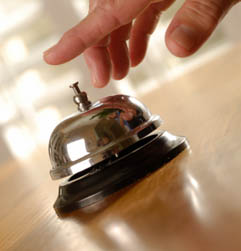How Much Should You Spend? My answer may surprise you.
Actually if you know me at all, my answer shouldn’t surprise you at all. So let me get my answer out there right now. How much should you spend on advertising and marketing? Probably, more than you are spending now. If you own a small business, you are notorious under-spenders on advertising and marketing. I actually don’t blame you. This is because small business owners usually have limited resources. With limited resources, expenditures that don’t appear to be critical on the surface are going to get a low priority. Further, much of the advertising and marketing done by small businesses…well it sucks to be frank.
That is largely because you are trying to do it yourself. If that is the case, you might as well not spend any money on it, unless, of course, you own an advertising or marketing firm. You need help to do it right. So here are some steps you can take that may help you get your advertising and marketing on track.
Step #1 – Determine an Amount to Budget – You need to figure out how much you can afford to spend. Understand that good advertising and marketing SHOULD bring you new customers and cause your existing customers to refer you more new customers. It’s an investment, but one that should have a return, and should always keep that return in mind. You may wish to contact industry organizations you belong to or may exist. They often have data that can provide recommended spend amounts, usually as a % of revenue. I hate rules of thumb, but if you are budgeting 1 or 2% of your revenue, it likely isn’t going to be enough. Try 5% of revenue as a start.
Step #2 – Hire Good People to Help You – Once you armed with a budget, you need to get the right people on board. The right people will talk to you about return on your investment. The right people will understand the lifetime value of a customer. The right people understand that an important part of marketing is how you talk to your existing customers, because it is likely they are the best resource for new customers for you. The right people will LISTEN. If they come in to your first meeting with a solution, don’t hire them.
Step #3 – Develop a Strategic Advertising & Marketing PLAN – Whatever you end up doing, it has to fit together. The message must be compelling and it must be consistent throughout all of your communications. People are bombarded with sales messages all day and night. Your message should be memorable and something you can deliver on. When you have a written plan, you are much less likely to mess this up.
Step #4 – You Need to Be Involved – You need to provide your expertise to the process. One weakness an advertising or marketing person can have is a lack of expertise about your industry. They often obtain that expertise by doing market research. That can be expensive. That doesn’t mean you don’t do it, but in some ways you are paying them to learn about your industry. You can be an excellent resource to the process by providing your knowledge of the industry. It will also help make the message you send more targeted at the intended recipient, because you have valuable information about the profile of that person/business.
Step #5 – You Have to Keep the Message Out There – There is a reason that advertising folks refer to advertising efforts as “campaigns.” This is because people will very likely not respond to your message the first time they see or hear it. Your plan must be repeated, often several times before a prospect will respond. I once had a great idea about a special service my former firm could provide for clients. I devised a compelling letter to send to clients that I thought was irresistible. We sent it out specifically to clients we KNEW would benefit from the service. It was a no brainer…from my perspective. So off went the letter and I just waited for the flood of responses. We ended up with 2 or 3. And this was from EXISTING clients. This was because the letter was the only thing we did to market this service. We didn’t do nearly enough to prompt them to act. Lesson learned.
Step #6 – See What Works and Repeat It – If a particular campaign works, repeat it. Again and again. Until it stops working. If a campaign gets little or no response after a few touches, change it. Success with a small business budget is hard – don’t ignore even modest success. If you are getting a positive response, you are on to something. You may need to tweak it but stick with it.
Step #7 – Ignore the Web at Your Peril – If your web presence is not a part of your marketing and advertising efforts, you are living in 1995. Prospects who hear about you, get a referral for you or see your ads or marketing efforts are absolutely going to go check out your website. Best you have one and best that website be something a prospect would want to see when they get there. I don’t know what that its, but you can easily snatch defeat from the hands of victory with a poor or non-existent web presence.
Mark Forrester and Lance Cummins are trusted colleagues. Much I have learned about advertising and marketing I learned from them. They get my unqualified recommendation to help you with your advertising/marketing/web efforts. I’m also a huge fan of Steve Dubin at PR Works and Glenn Anderson at Viamark. I’ll be happy to connect you – just drop me a line or call.







